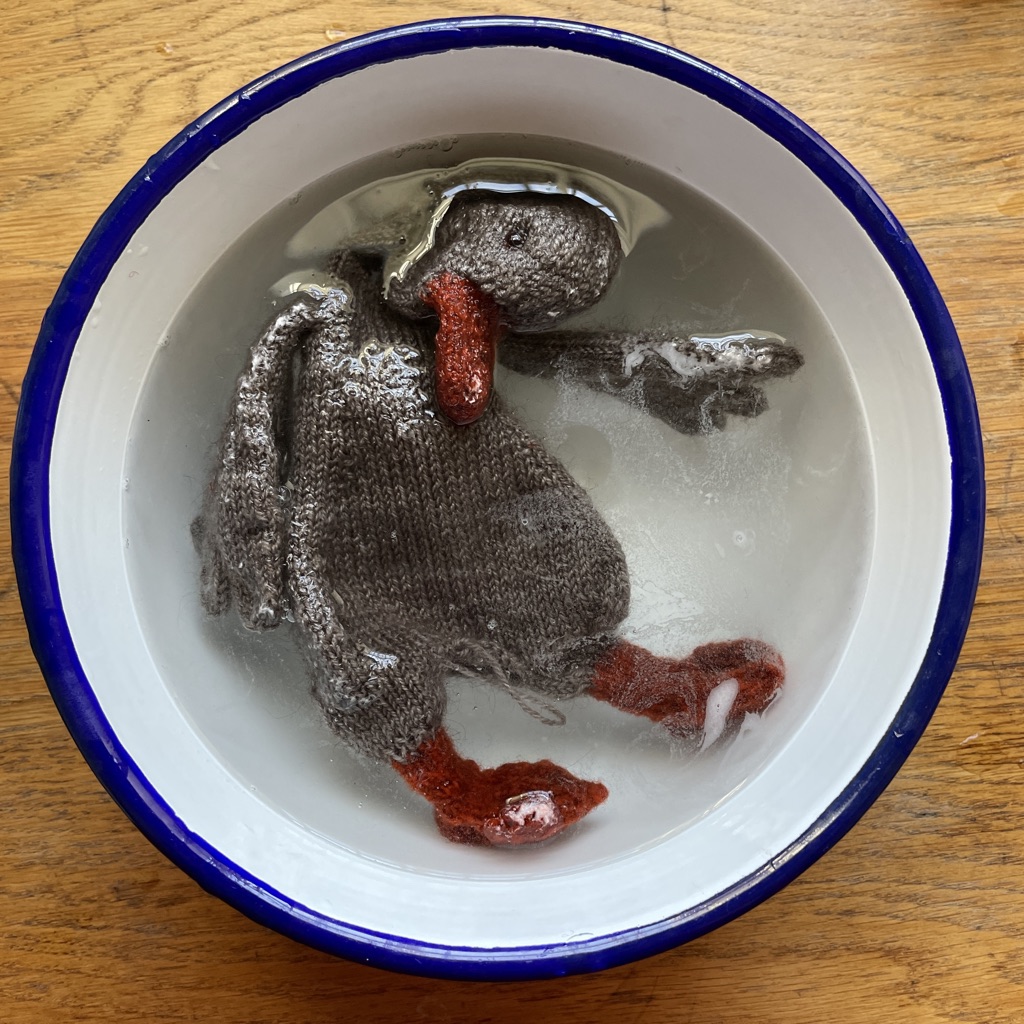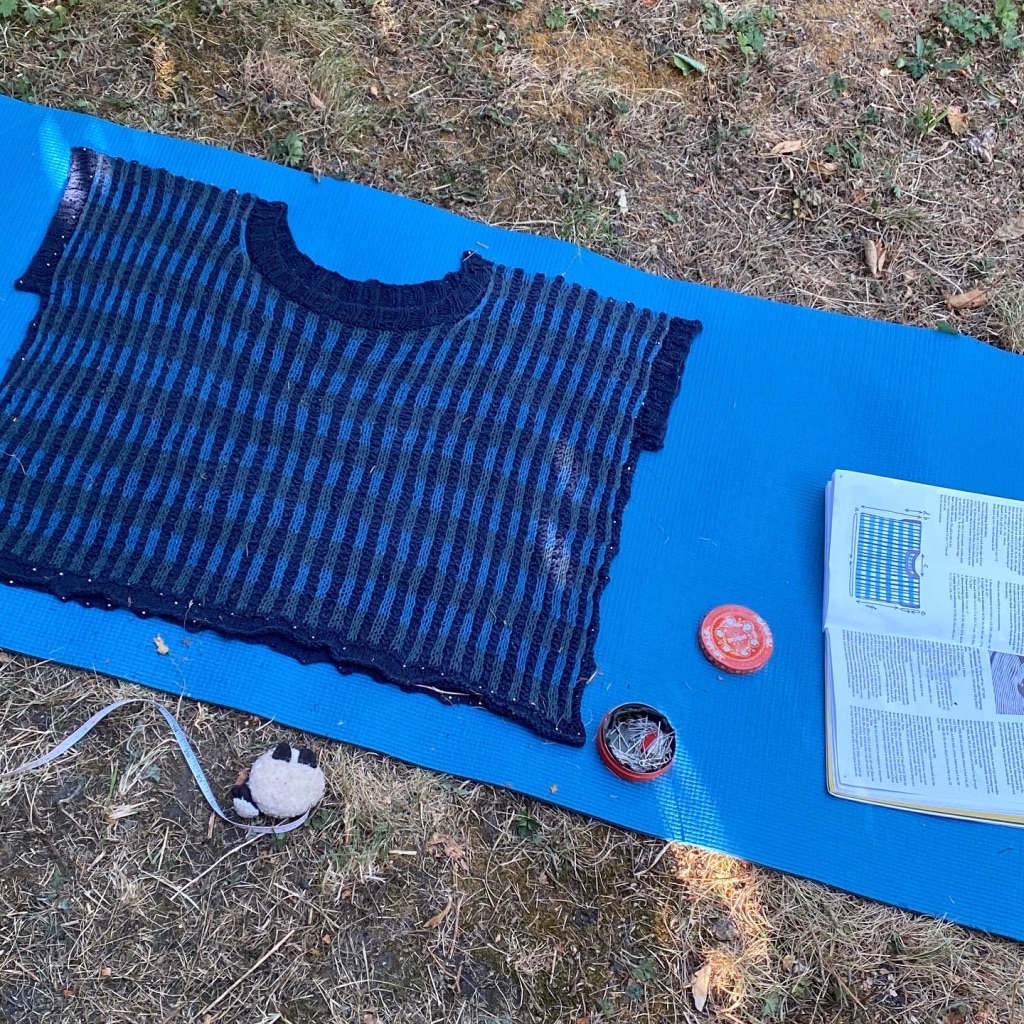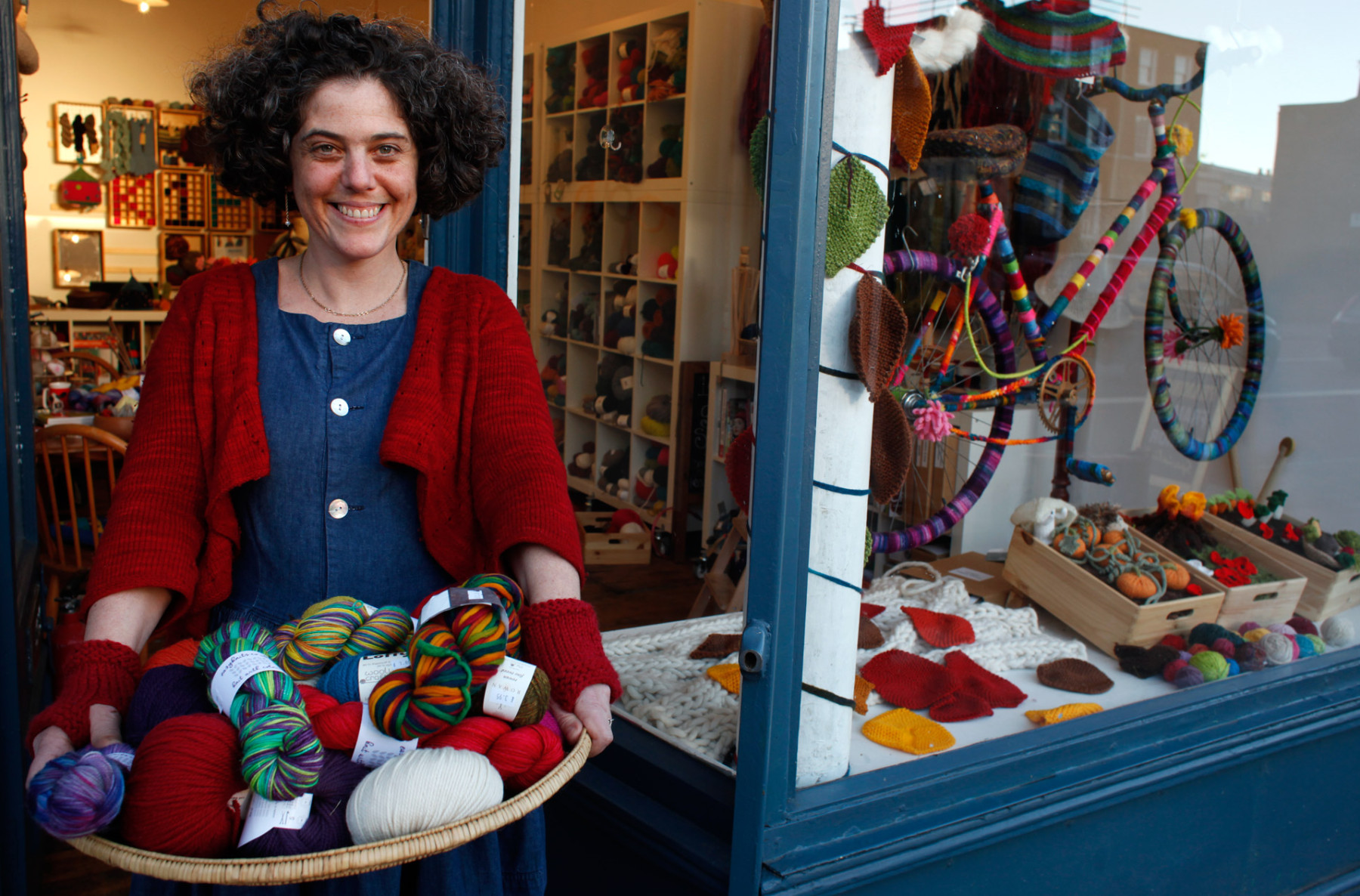In my knitting-as-a-story sense of a project, there’s a pleasing simplicity to the way that the beginning, middle and end, map so nicely onto swatching, knitting and blocking.
3 critical sections, each of which contributes to the whole, but the first 2 of which tend to get the most attention. So in the interest of balance and completion, today we are talking about Blocking – the final bow of your knitting project.
But do you really need to block your knitting? Does it make any difference in the end? Isn’t that why we don’t speak about it much?
It turns out that there is more to these questions than meets the eye, so I’ve called on an expert to help me out here. Felix Thevenot is an insatiably curious knitter, whose fascination with blocking has taken him on a journey through the history of what textile workers used to call Dressing, to the molecular structures of the different yarns we work with. I feel pretty certain that we can get to the bottom of it with Felix.
First of all what are we talking about?
At its simplest blocking is about making your finished knitting wet and letting it dry.
How wet? And at what temperature? and in what position? Well I’m so pleased you’ve asked because Felix has ALOT to say on all of those subjects.
Felix explains that there are 3 main ways to block:
- wet blocking
- spritzing
- steaming
All methods start with rehydrating the fibres of the yarn. The combination of heat and water makes our knitting pliable and stretchy. It affects the fibres, and consequently the stitches and ultimately the fabric, that the stitches combine to make. And in general it affects them in a good way.
“Blocking takes your fabric from one state to another. This can also (but not necessarily) mean taking it from one size to another, or one shape to another.
Animal fibre yarns like sheep’s wool and alpaca are made of Keratin – and just like the keratin of our own human hair and finger nails, it has microscopic cuticles on its surface. Heat softens these cuticles, allowing them to unfurl and open up, and critically for our blocking purposes, let the water in. You’ll recognise this from the way that your nails soften after a soak in the bath or from doing the washing up. Now although heat is integral to our rehydration project, it has to be carefully managed. If you add agitation to the heat-moisture mix, those cuticles get a bit over-excited and can start locking together, resulting in the fabric felting and shrinking.
Room temperature or hand hot water is a safe place to start. Keeping the the fabric still in the water is also always a good idea. Softened cuticles alone, are not the felting issue – it’s when they move or get shocked, that we have a problem. So let your sweater take its bath in peace, and if it’s been relaxing at a hand-hot temperature, avoid rinsing it in a sudden shower of cold water. Everything – even temperature change – needs to be handled gently.
For cellulose (plant-based) fibres like cottons and linens, also nettle and hemp, soaking your knitting is about giving your thirsty yarn a drink. As Felix says,
“Those fibres were born and raised in water… It’s the moisture in the plant’s stem which makes it bend instead of snapping in the wind. “
Spinning these fibres into yarn involves taking all the moisture out and adding in a whole load of rotational energy in the form of twist.
“When we put the yarn into water, we’re placing the fibres into zero gravity. The water relaxes everything. It provides a space for all that energy to even out.“

The consequence for your knitting is that the fabric becomes pliable – you can stretch and shape it into the form and size you want and it stays there as it dries. Meanwhile uneven stitch tension can work its way out, leaving the fabric looking altogether calmer than it was before blocking. The transformative power of blocking will vary from one yarn to another but it is predictable once you understand where it’s coming from. It all comes back to the moisture and your yarn’s capacity to take it in. That’s why you’ll notice more dramatic change with crimpy (zigzaggy) fibres like merino, and jumbled up fibres that are twisted together in woollen-spun yarns. These all have more space for the water to come in and to do its work, filling the fibres out to take up the airy space available to them, adding a sense of ‘bloom’ to the fabric after its watering.
But beware relying on the shape/size changing properties of blocking – what stretching gives, re-washing can also take away. Pinning a pliable sweater into shape will work right up until you wet it again – at which point it’s liable to relax back to where it started from and will need stretching out again to get back to your desired fit.
So if water and heat are going to enable me to change the shape and size of my knitting, where does that leave the purpose of the swatching we do at the beginning? Wasn’t that supposed to be a guide to how the knitting would turn out? Yes it is, and yes that means you really need to block your swatch to know how this story ends.
Felix says, “if I block my gauge swatch I don’t pin block it. If I stretch it, I won’t get the relaxed dimensions of my sweater. And on the whole, it’s the relaxed dimensions I’m interested in basing my knitting on.”
So let’s get to the juicy bit – how do we actually block our freshly rehyrated knitting and will it take me down another knitting accessories rabbit hole? Felix is typically open ended on this point..
“You can use a block, a frame or 12 thousand pins on a queensize bed, but you can also toss it in the dryer.“
His point is that it really depends on what you’re blocking and how you want it to look. For example, the human form comes with two handy built-in sock blockers on the end of your legs, that will take care of the sock blocking process without additional interventions, but when it comes to lace shawls that have been painstakingly knit with carefully engineered holes between the stitches, you will need a mat or board which is big enough for the garment in its entirety , and soft enough to take pins. I use a yoga mat. Children’s playmats – the type which come in pieces that jigsaw together also work well. Using a tape measure and your pattern’s schematic diagram to guide you on your way, you can then begin the process of laying and stretching your knitting out, to look just the way you want it to.

Alternatively if you’ve knitted yourself a ribbed figure-hugging sweater or dress, you probably don’t want to give your stitches any excuse to stretch out width ways. This one needs to be hung out vertically to dry off with the stretchiness kept safe and intact between those veritcal ribs.
“It’s all about understanding what you want your fabric to look like at the end.“
With grateful thanks to Felix Thevenot for generously sharing his research and time to make this post possible.

